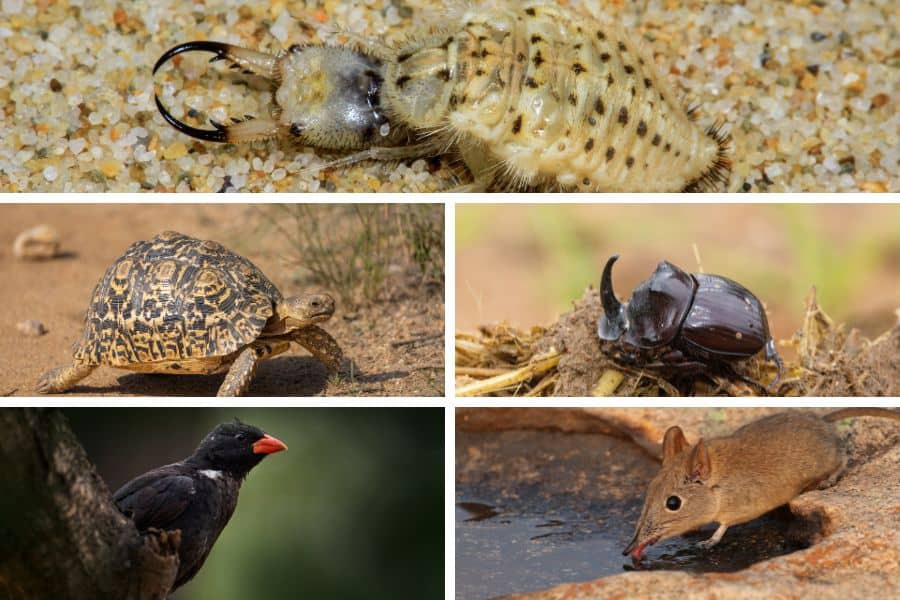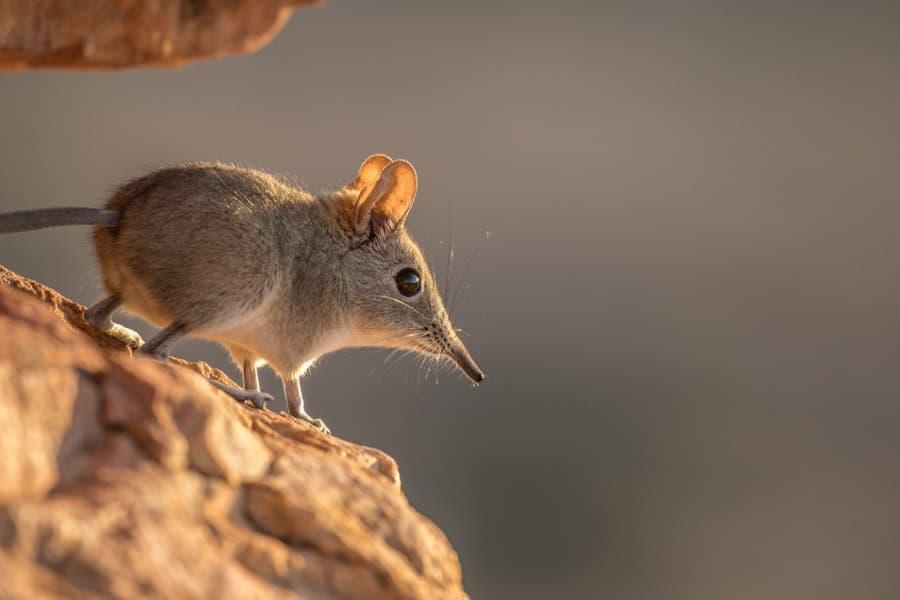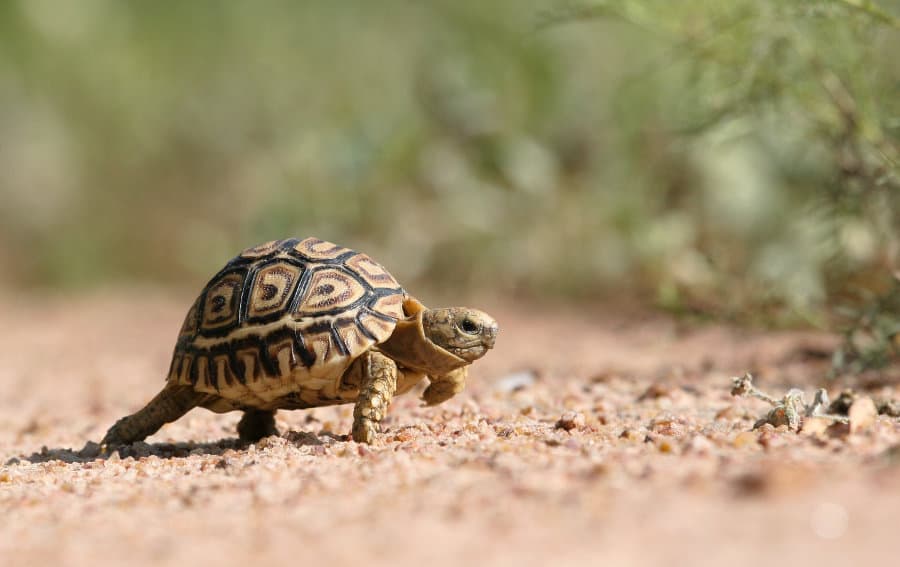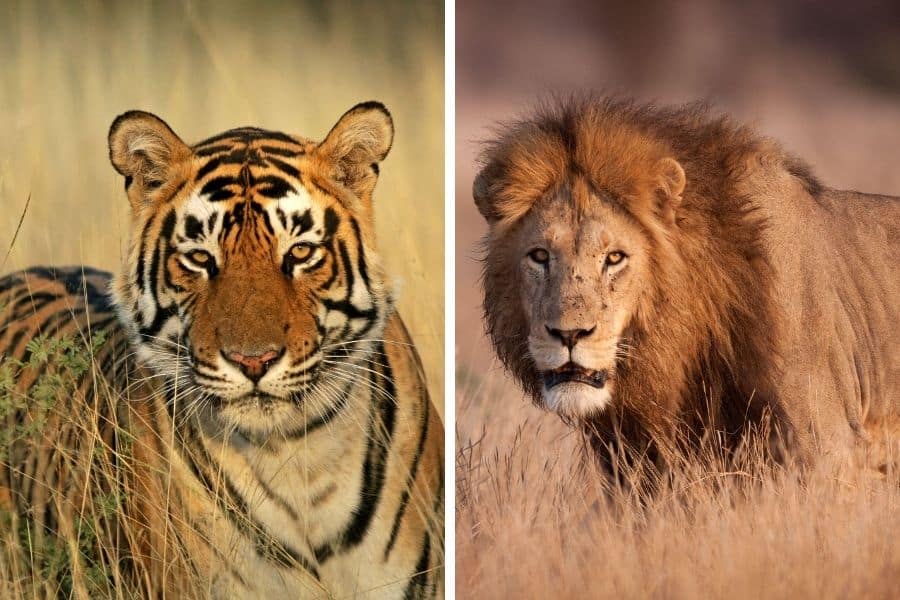Ask anyone about their sought-after safari sightings, and they are almost bound to reel off the animals that make up Africa’s Big Five. Most notably, the lion, leopard, elephant, rhino and buffalo.
These legends of the plains are the same animals that grace our Instagram feeds and checklists, all of us wishing beyond hope that we’ll strike it lucky out in the wilds.
Still, Africa is home to more than game drive giants, and as the saying goes, good things come in small packages. On this continent, for every heavyweight champion, there’s a pint-sized, overlooked cousin with a name borrowed from its larger, more famous counterpart.
In this post, we’ll be meeting the Little Five animals, these tiny ambassadors of the bush, often missed by the casual visitor but every bit as fascinating as their namesakes.
Tracking each one down is like joining a secret club, and spotting one in the wild is less about luck and more about slowing down, fine-tuning your senses.
To find these critters, you will need to pay attention to those subtle cues in the bush, for example, the flick of a wing, the curl of a shell, or the faint rustle in the undergrowth.
Elephant Shrew: “The Storybook Little Five”
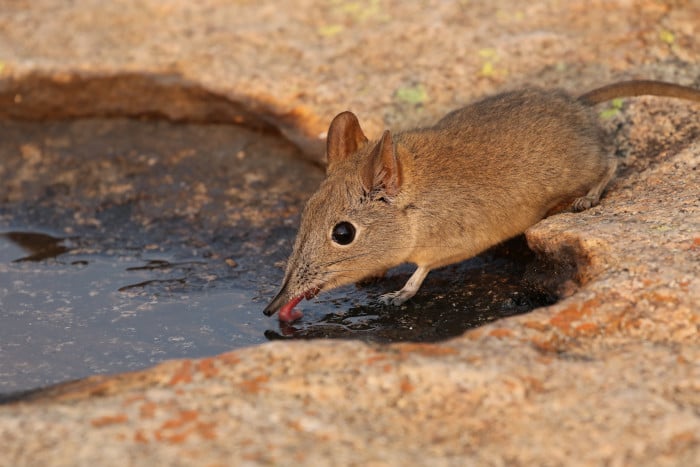
Despite its name, the elephant shrew is not a shrew; it’s a long-nosed insectivore. Recent evidence suggests that they are distantly related to elephants, sea cows, and aardvarks.
Thoughtfully designed, this tiny creature’s distinctive elongated snout – a miniature version of an elephant’s trunk – is used to twitch and probe the earth for ants and termites.
There are about 20 species of elephant shrew scattered across Africa in the continent’s deserts and forests. Sadly for safari-goers, they are small, fast, and notoriously difficult to spot.
Darting away at speeds up to 17 mph, it’s almost like trying to follow a windblown leaf as it travels fleetingly across your path. Blink and they’re gone, vanishing into a maze of tiny, well-worn runways carved through grass and brush.
For those patient enough to wait, the reward is seeing one pause just long enough to reveal its bulging eyes and delicate frame, like something dreamt up in a children’s storybook.
Look for it racing through acacia scrub and woodland in the Kruger National Park, where ground cover and dry riverbeds offer perfect hiding spots.
The Antlion: “Small but Deadly”
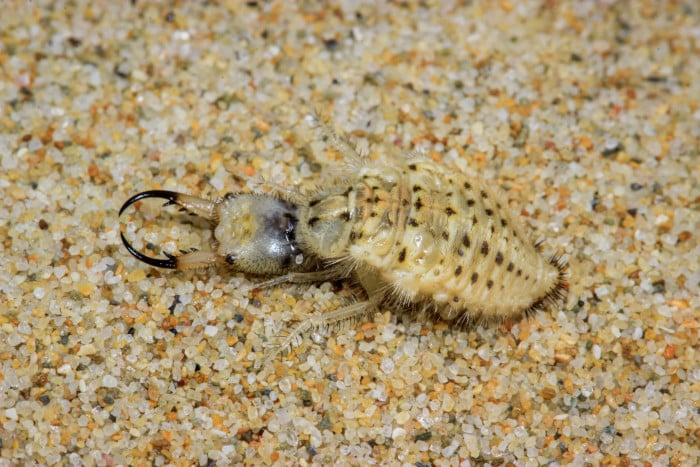
If you’ve ever come across a small, perfectly formed, conical pit in the sand, chances are you’ve stepped into the world of the antlion. The larva of this insect is a ruthless little predator.
After creating its spiral of doom, it lies buried at the bottom of its sandy trap, waiting for unsuspecting ants to tumble in.
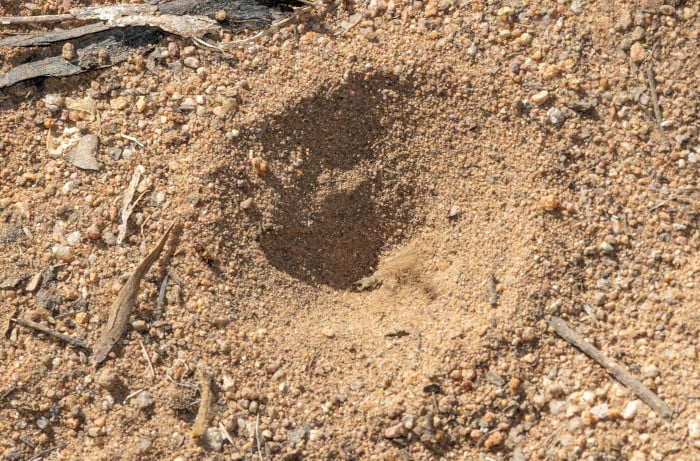
Once the prey slides down, escape is almost impossible. The antlion flicks sand upwards, and a never-ending avalanche of grains draws its victim closer to its death with terrifying efficiency.
As adults, antlions transform into fragile winged insects that resemble damselflies, their lifespan only lasting for a month to around 45 days. A sharp contrast to their behaviour in their larval form, they no longer rule their tiny kingdoms with chilling precision.
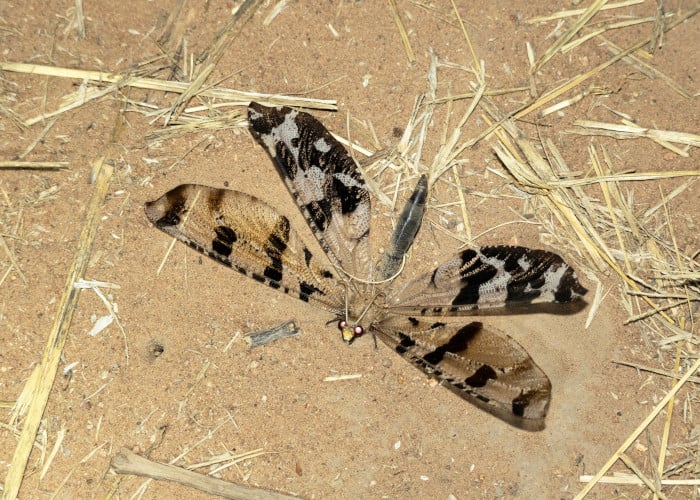
In this final phase, they switch up from hunter to lover, with most of their time spent focused on mating and fluttering about in the twilight.
To safari guides in the know, antlion traps are just as exciting to point out as lion tracks. Another poignant reminder that Africa’s savannah is not only about large-scale drama but about micro-theatres of survival playing out beneath your feet.
For the best chance of a sighting in Africa try Tanzania’s Serengeti, the Kgalagadi, or Etosha National Park, where the sandy soil and dry plains allow those classic pit traps to form undisturbed.
Buffalo Weaver: “The Architect”
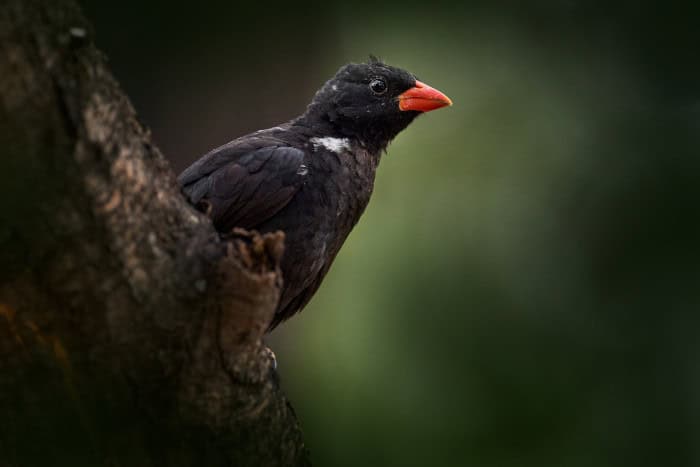
While the Cape buffalo is often found thundering across the African plains, the buffalo weaver prefers to hang out in the trees and thickets.
These small birds, found mostly in East and Southern Africa, are master architects, their nests sprawling, chaotic clusters of sticks, often resembling heaps of tangled brush wedged in the branches of acacia trees.
Of the three buffalo weaver species, the most common and one of the largest at 23 cm is the red-billed buffalo weaver. With its black plumage and a bright red beak, it is easy to identify.
Living in communal nests that are home to multiple males, each with their own harem of females, it’s their complex social structure that makes them remarkable. Their colonies often contain literally dozens of birds, all of them contributing to the construction and defence of their fortress-like nests.
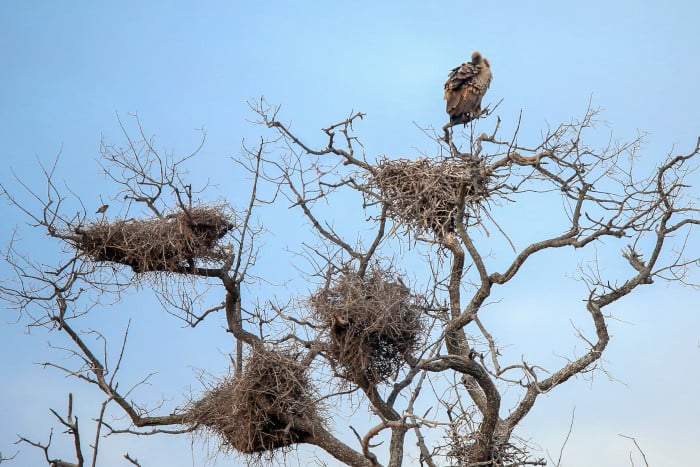
Spotting a buffalo weaver is simple. Look for the messy stick nests that seem far too large for their residents.
Gregarious and rather noisy, their calling card is bird chatter, the soundtrack of squawks, cackles and whistles when they set off in unison before climbing into one of their numerous nest holes and retiring.
Head to Tarangire National Park where riverine thickets and woodland edges provide both nesting material and insect prey.
Leopard Tortoise: “The Spotted Survivor”
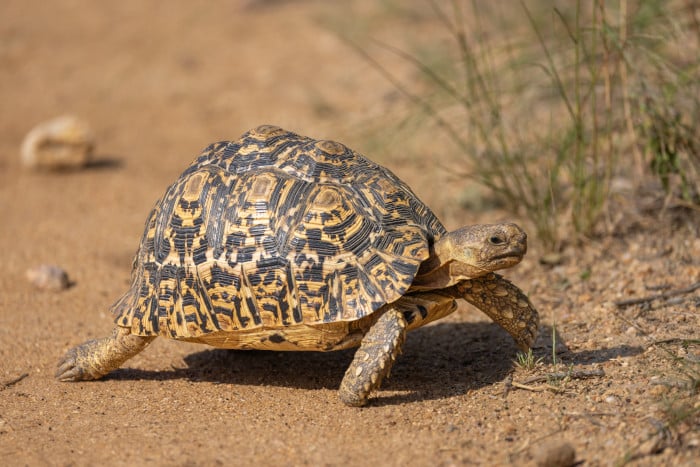
While leopards melt into Africa’s tall grasses, the leopard tortoise, in contrast, carries its spots for the world to see. Covered with golden and black rosettes, its shell, which is high-domed and ornate to protect it from predators, is one of the most striking patterns in the reptile kingdom.
Native to sub-Saharan Africa and amongst the largest of their kind in Africa, some leopard tortoises grow up to 50 cm long and weigh up to 40 kilograms.
Unlike their more fierce namesake, they are gentle vegetarians, feeding on grasses, succulents, and even the bones and droppings of other animals to boost their calcium intake.
Boasting a rather unique skillset, they are one of the few species of tortoise that can swim (though they clearly prefer dry land). They have even been observed paddling and floating and are said to be able to submerge themselves in shallow water for up to 10 minutes!
Mostly active around dawn and dusk or whenever temperatures are more conducive to grazing, they are an incredible sight to behold.
You might catch one walking across the savannah in Kenya’s Masai Mara, where its camouflage blends with dry vegetation.
Rhinoceros Beetle: “The Gladiator”
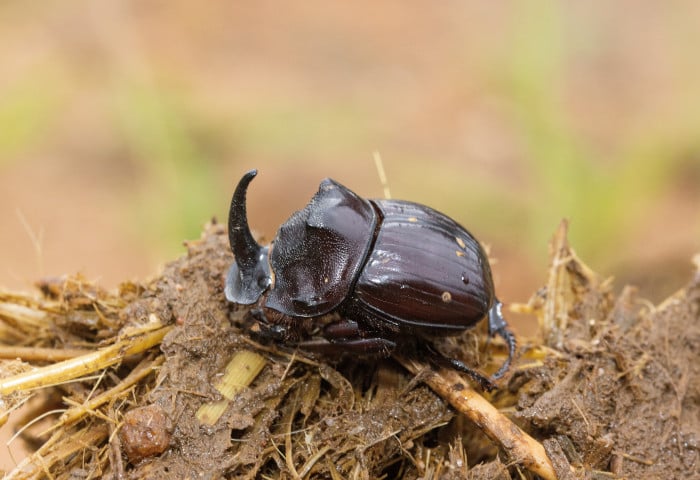
The rhino may be one of Africa’s most endangered icons, but the rhinoceros beetle is far more common and sadly rarely given a second glance.
Named for the horn-like projections on the males’ heads, these beetles are some of the largest in the world and some of the strongest animals on earth relative to their size.
A fun fact: a rhino beetle can lift up to 100 times its own weight.
They feed on fermenting fruit, nectar, and palm tree sap, but not using their horn, which has a singular purpose in fighting rivals during mating contests and battles staged in the leaf litter.
For many safari-goers, beetles don’t make the checklist, but to the patient observer, watching a rhino beetle wrestle another off a branch can feel like witnessing a gladiatorial showdown, albeit in miniature.
They can be found in many African parks, including South Luangwa, where they thrive in woodlands and rotting logs, only giving away their presence by the grooves and burrows they carve.
Little Five Sightings
Often overlooked in favour of the more famous Big Five, this round-up of the even more intriguing Little Five serves as a reminder that some of Africa’s best safari moments are not always about the spectacle but are hidden in the details.
Even with the best laid plans in mind, not everyone will leave Africa with a photo of a lion on the hunt or an elephant at sunset. But everyone can find the Small Five if they are willing to slow down and tune into the little dramas unfolding around them.
